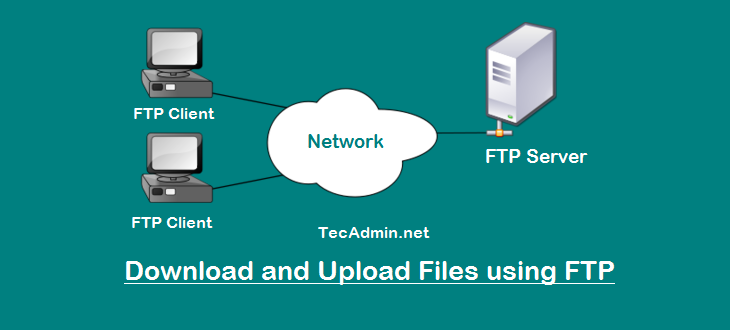In addition to word and phrase searches, you can use grep to search for complex text patterns called regular expressions. A regular expression — or "regexp"— is a text string of special characters that specifies a set of patterns to match. This guide takes a tour of some of the best command-line tools that are used for searching matching strings or patterns in text files. These tools are usually used alongside regular expressions – shortened as REGEX – which are unique strings for describing a search pattern.
For example, ripgrep respects .gitignore files and skips matching files and directories by default. It also ignores binary files, skips hidden files and directories, and doesn't follow symbolic links. Understanding the script may need a moment of time. First, the script extracts the list of files from the archive, and evaluates each file one after the next. Second, the single matches are saved in the variable $match.
Therefore, the current file is extracted from the compressed archive, and is then piped to fgrep. Fgrep searches the data stream, and indicates a match with a positive return value. In case of that the following echo command is executed, and the file name is sent to stdout. Third, the actual match is printed as well, and followed by an empty line. Patterns that exactly specify the characters to be matched are called "literals" because they match the pattern literally, character-for-character. First, we'll use both grep and sed to extract just the lines that start with one or more digits followed by blank characters .
To confirm that we use the same regular expression for both tools, we'll assign it to a variable. In the previous grep examples, grep performed the search for a specific string in the given text file. Grep was actually searching using the very basic regular expression. The grep command is one of the most useful commands in a Linux terminal environment. The name grep stands for "global regular expression print". This means that you can use grep to check whether the input it receives matches a specified pattern.
This seemingly trivial program is extremely powerful; its ability to sort input based on complex rules makes it a popular link in many command chains. When you want to search and replace specific patterns of text, use regular expressions. They can help you in pattern matching, parsing, filtering of results, and so on. Once you learn the regex syntax, you can use it for almost any language.
Redefined A regular expression regex defines a search pattern for strings. Strings in Java have builtin support for regular expressions. Strings The Eclipse IDE allows to perform search and replace across a set of files using regular expressions.
Some older versions of sed do not support extended regular expressions. If your version of sed does support extended regexps, use the -r option to tell sed that you are using extended syntax. Grep is a command-line tool to search for regular expressions.
Grep will print the matching line to the output and with the --color flag you can highlight the matching strings. GNU egrep attempts to support traditional usage by assuming that is not special if it would be the start of an invalid interval specification. For example, the shell command egrep '1' searches for the two-character string 1 instead of reporting a syntax error in the regular expression. POSIX.2 allows this behavior as an extension, but portable scripts should avoid it. Grep comes with a lot of options which allow us to perform various search-related actions on files. In this article, we'll look at how to use grep with the options available as well as basic regular expressions to search files.
In this article, we reviewed 10 practical examples of using Grep Linux command for searching and finding strings in a text file. Along the way, we learned how to use regular expressions in conjunction with Grep to conduct complex searches on text files. By now you have a better idea on how powerful Linux search functions are. There are times where you'll need to search for a literal period or a literal opening bracket, especially when working with source code or configuration files.
We will use the text files that we created earlier as examples (see " Setting up the examples"). Note that grep takes a regular expression as a required parameter and a list of zero or more files to search. If no files are given, grep searches stdin, which makes it a filter that can be used in pipelines. If no lines match, there is no output from grep, although its exit code can be tested. Ripgrep also has full Unicode support, can search compressed files, and optionally lets you switch its regex engine to use PCRE2 regular expressions.
Linux Regular Expressions are special characters which help search data and matching complex patterns. Regular expressions are shortened as 'regexp' or 'regex'. They are used in many Linux programs like grep, bash, rename, sed, etc. Technically speaking, the word or phrase patterns are regular expressions—just very simple ones. In a regular expression, most characters — including letters and numbers — represent themselves. For example, the regexp pattern 1 matches the string "1", and the pattern boy matches the string "boy".
The grep Linux/Unix command line utility is one of most popular tools for searching and finding strings in a text file. Eventually, the grep command was written to do this search on a file when not using ed. Extended regular expression syntax is a GNU extension. It eliminates the need to escape several characters when used as we have used them in basic syntax, including parentheses, '? The flip side is that you must escape them if you want them interpreted as characters in your regular expression. You may use the -E (or --extended-regexp option of grep) to indicate that you are using extended regular expression syntax.
Alternatively, the egrep command does this for you. Listing 7 shows an example used earlier in this section along with the corresponding extended expression used with egrep. In this tutorial we'll look at the find command and how you can quickly use it to locate files in your filesystem. Fortunately only a few simple options are needed to provide most users with all the capability they need. 's Search & Replace plugin allows you to search for text orregular expressionsin many different files at once.
You can search all open files, all the files in one directory and optionally its subdirectories, or in the active file. You can even filter by filename, for instance searching only files that end with a particular file extension. The fundamental building blocks are the regular expressions that match a single character.
Most characters, including all letters and digits, are regular expressions that match themselves. Any metacharacter with special meaning may be quoted by preceding it with a backslash. On Unix-like operating systems, the egrep command searches for a text pattern, using extended regular expressions to perform the match. Running egrep is equivalent to running grep with the -E option. The ampersand metacharacter is useful, but even more useful is the ability to define specific regions in regular expressions. These special regions can be used as reference in your replacement strings.
By defining specific parts of a regular expression, you can then refer back to those parts with a special reference character. Ripgrep is a cross-platform utility for searching regex patterns. It's much faster than all of the earlier-mentioned search tools and recursively searches directories for matching patterns. In terms of speed and performance, no other tool stands out that Ripgrep.
It is a command line tool used in UNIX and Linux systems to search a specified pattern in a file or group of files. Grep comes with a lot of options which allow us to If there is no match no output will be printed to the terminal. Learn how to use regular expressions regex with find and replace actions If you need to search and replace in more than one file press Ctrl+Shift+R.
When you search for a text string that contains special regex symbols PyCharm Keep in mind that if you copy Ctrl+C the string first and then paste. These options open up the capabilities of "extended regular expressions". Extended regular expressions include all of the basic meta-characters, along with additional meta-characters to express more complex matches. In this tutorial, you will explore the grep command's options, and then you'll dive into using regular expressions to do more advanced searching. It is a command-line utility used to search a list of files, directories and perform several functions on them.
Usually, it's useful that ripgrep treats every search pattern as a regular expression by default. Within a bracket expression, a range expression consists of two characters separated by a hyphen ("-"). It matches any single character that sorts between the two characters, inclusive, using the locale's collating sequence and character set. For example, in the default C locale, [a-d] is equivalent to . Many locales sort characters in dictionary order, and in these locales [a-d] is often not equivalent to ; it might be equivalent to , for example.
To obtain the traditional interpretation of bracket expressions, you can use the C locale by setting the LC_ALL environment variable to the value C. By default, ripgrep will skip binary files/hidden files and directories. Also, be advised that by default it won't search for files that are ignored by .gitignore/.ignore/.rgignore files. Enable entering the search string in several lines. Even without this option you can search for multiline matches with regular expressions and.
A brief summary of regexp syntax in IntelliJ IDEA plus tips and tricks. Be used for creating search and replace as well as issue navigation patterns. Regular expression as a replacement string you can retrieve it using the. Searching Code Problem You want to search a single file or all files in a project for some matching text.
As you'd expect of a good IDE Eclipse has a lot of builtin search support. Plans are in the works to enable you to use regular expressions in searches as well. In contrast, egrep takes the pattern as a Regular Expression and is similar to grep -E (and grep --extended-regexp). In older Linux releases prior Debian 4 Etch, both commands are implemented as shell scripts that call grep with special options.
Nowadays, current Linux releases keep the commands as binary files. In either case the search is a bit quicker than using grep without this special option. The name grep is a combination of the initial letters of the four words "global / regular expression / print". This is similar to formulating search patterns in the stream editor sed. Grep is designed to find according patterns in entire data streams . Given patterns are interpreted as text or Regular Expressions .
In this article, we show you to run advance string searching using Grep with regular expression by giving you 10 hands-on examples on its implementations. Many examples discussed in this article have practical implications meaning you can use them in your daily Linux programming. The following samples describe some regexp examples for commonly searched-for patterns. If you add the -n option, it tells you what line numbers matched. If you simply want to know how many lines matched, use the -c option, and if you want just a list of files with matches, use the -l option. The set can be either a list of characters or a range separated with the hyphen character.
Character sets follow the same syntax as and behave in the same manner as character sets in regular expressions. The following glob will match all files ending in .rb in the current directory. The glob method will return all files that match the globbing rules as an array, which can be saved for later use or iterated over. Sometimes, using the --type (or -t for short) option might not give you enough control over which files to include in the search. In those cases, you can use the --glob (or -g for short) option. Ripgrep will only search files whose paths match the specified glob.
March 19, 2020In this post, I want to introduce you to ripgrep, a smart and fast command line search tool that I find myself using all the time when programming. Ripgrep recursively searches directories for a regex pattern and outputs all matches that it finds. At the start of this guide, we mentioned that grep stands for global regular expression print. The term "regular expression" is defined as a special string that describes the searching pattern.
Regular expression has its own structure and rules. The backreference \n, where n is a single digit, matches the substring previously matched by the nth parenthesized subexpression of the regular expression. The following table lists four special characters that are very useful in regular expressions. You can quickly find and replace text strings in the current document. You can narrow your search process use regular expressions in your search and manage your search results. Press Ctrl+F or select Edit | Find | Find from the main menu.
IntelliJ IDEA highlights the results of your search in the file. The command grep comes with two special variants - fgrep and egrep. Fgrep interprets the search pattern as a string of single characters and is exactly the same as grep -F (and grep --fixed-strings). This simplifies the call, and returns a list of files with matches, no matter how many matches exist for each file.
With the help of this you can see if there are matches at all, and if so, in which files. This tutorial has only scratched the surface of what you can do with the Linux command line using regular expressions with grep and sed. Use the man pages to learn more about these invaluable tools. Ind command in UNIX is a command-line utility for walking a file hierarchy. It can be used to find files and directories and perform subsequent operations on them.
It supports searching by file, folder, name, creation date, modification date, owner and permissions. By using the '-exec' other UNIX commands can be executed on files or folders found. There are numerous string-searching algorithms and tools that use regular expression for performing searches and replacing actions. While it's popular, different applications and programming languages implement regex slightly differently.























































